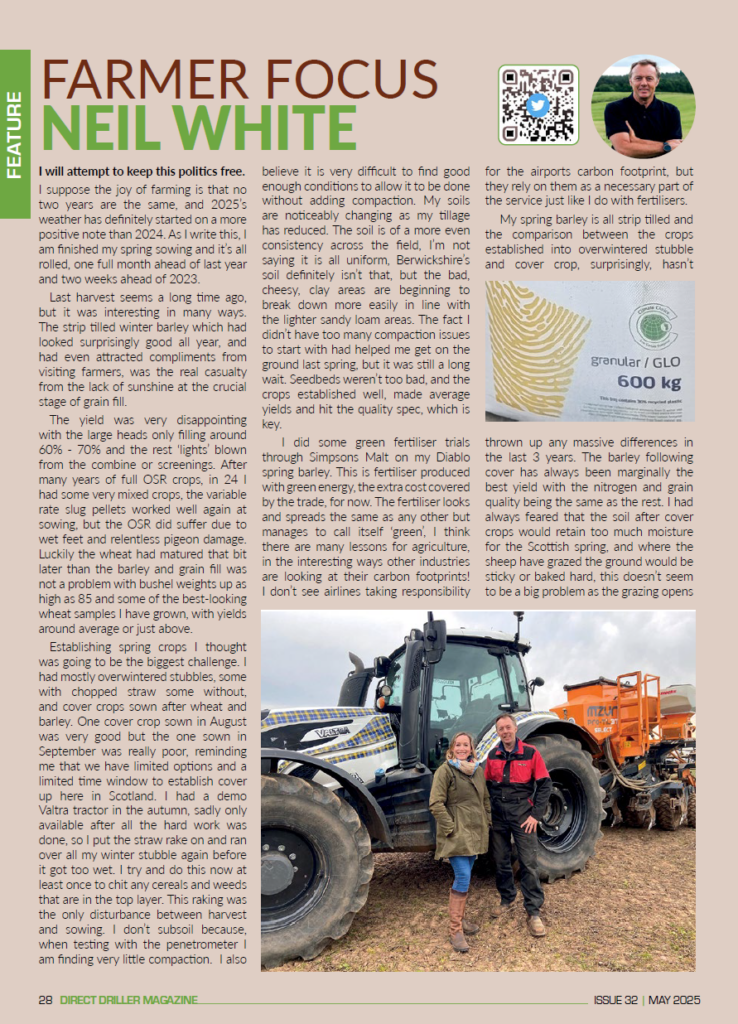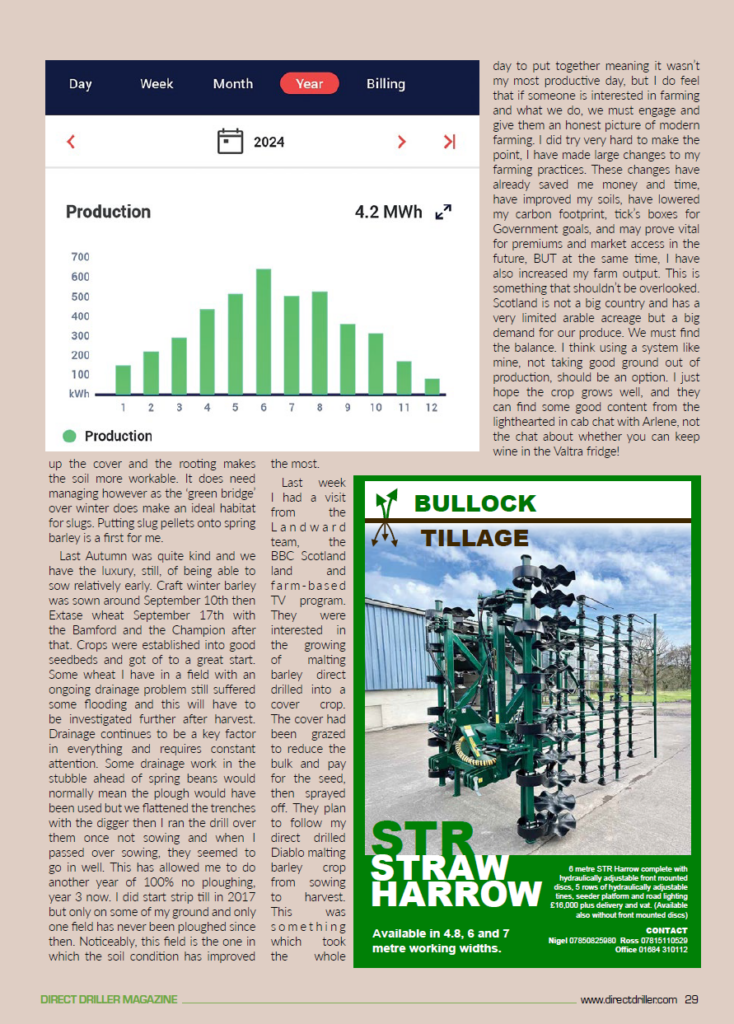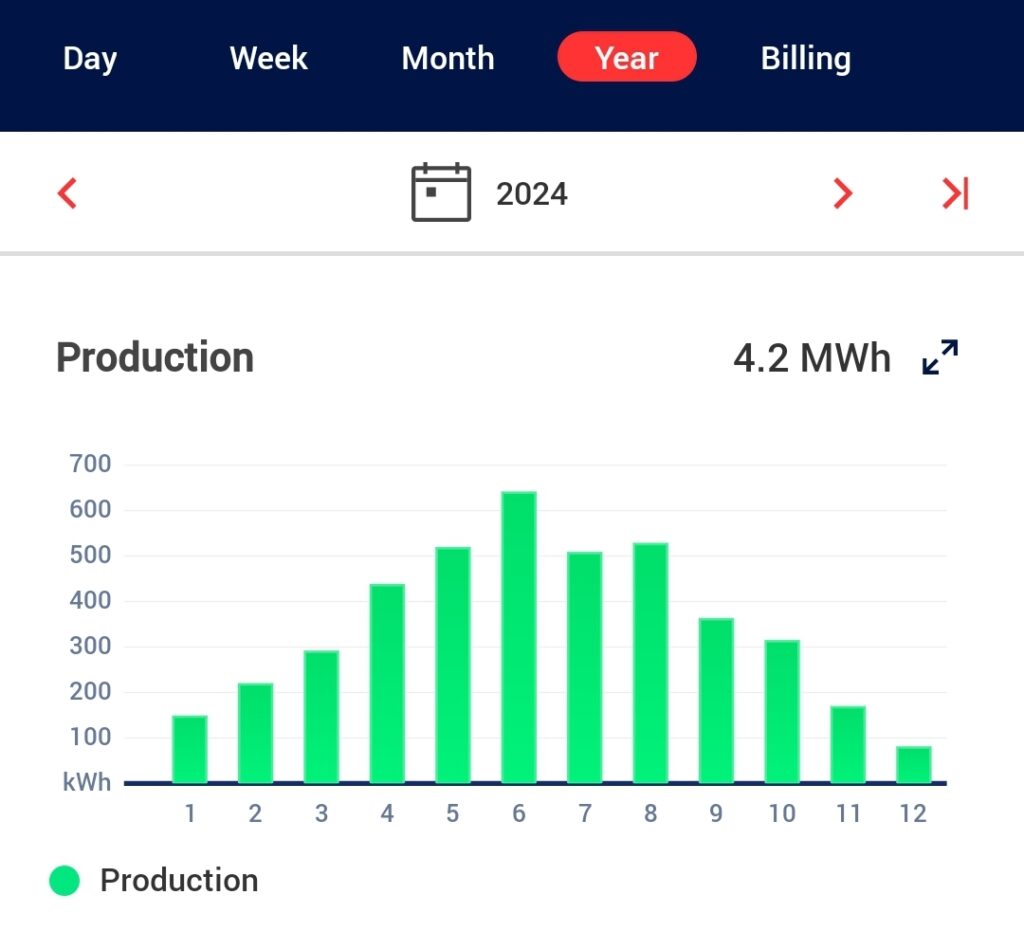Apr 2025
I will attempt to keep this politics free.
I suppose the joy of farming is that no two years are the same, and 2025’s weather has definitely started on a more positive note than 2024. As I write this, I am finished my spring sowing and it’s all rolled, one full month ahead of last year and two weeks ahead of 2023.
Last harvest seems a long time ago, but it was interesting in many ways. The strip tilled winter barley which had looked surprisingly good all year, and had even attracted compliments from visiting farmers, was the real casualty from the lack of sunshine at the crucial stage of grain fill.
The yield was very disappointing with the large heads only filling around 60% – 70% and the rest ‘lights’ blown from the combine or screenings. After many years of full OSR crops, in 24 I had some very mixed crops, the variable rate slug pellets worked well again at sowing, but the OSR did suffer due to wet feet and relentless pigeon damage. Luckily the wheat had matured that bit later than the barley and grain fill was not a problem with bushel weights up as high as 85 and some of the best-looking wheat samples I have grown, with yields around average or just above.
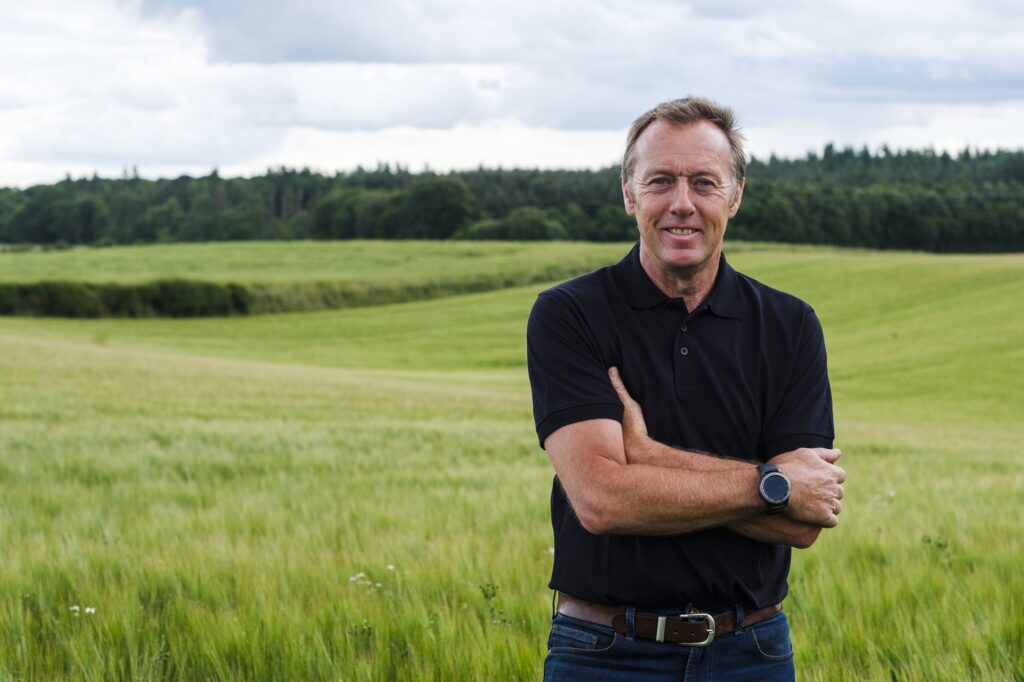
Establishing spring crops I thought was going to be the biggest challenge. I had mostly overwintered stubbles, some with chopped straw some without, and cover crops sown after wheat and barley. One cover crop sown in August was very good but the one sown in September was really poor, reminding me that we have limited options and a limited time window to establish cover up here in Scotland. I had a demo Valtra tractor in the autumn, sadly only available after all the hard work was done, so I put the straw rake on and ran over all my winter stubble again before it got too wet. I try and do this now at least once to chit any cereals and weeds that are in the top layer. This raking was the only disturbance between harvest and sowing. I don’t subsoil because, when testing with the penetrometer I am finding very little compaction. I also believe it is very difficult to find good enough conditions to allow it to be done without adding compaction. My soils are noticeably changing as my tillage has reduced. The soil is of a more even consistency across the field, I’m not saying it is all uniform, Berwickshire’s soil definitely isn’t that, but the bad, cheesy, clay areas are beginning to break down more easily in line with the lighter sandy loam areas. The fact I didn’t have too many compaction issues to start with had helped me get on the ground last spring, but it was still a long wait. Seedbeds weren’t too bad, and the crops established well, made average yields and hit the quality spec, which is key.
I did some green fertiliser trials through Simpsons Malt on my Diablo spring barley. This is fertiliser produced with green energy, the extra cost covered by the trade, for now. The fertiliser looks and spreads the same as any other but manages to call itself ‘green’, I think there are many lessons for agriculture, in the interesting ways other industries are looking at their carbon footprints! I don’t see airlines taking responsibility for the airports carbon footprint, but they rely on them as a necessary part of the service just like I do with fertilisers.
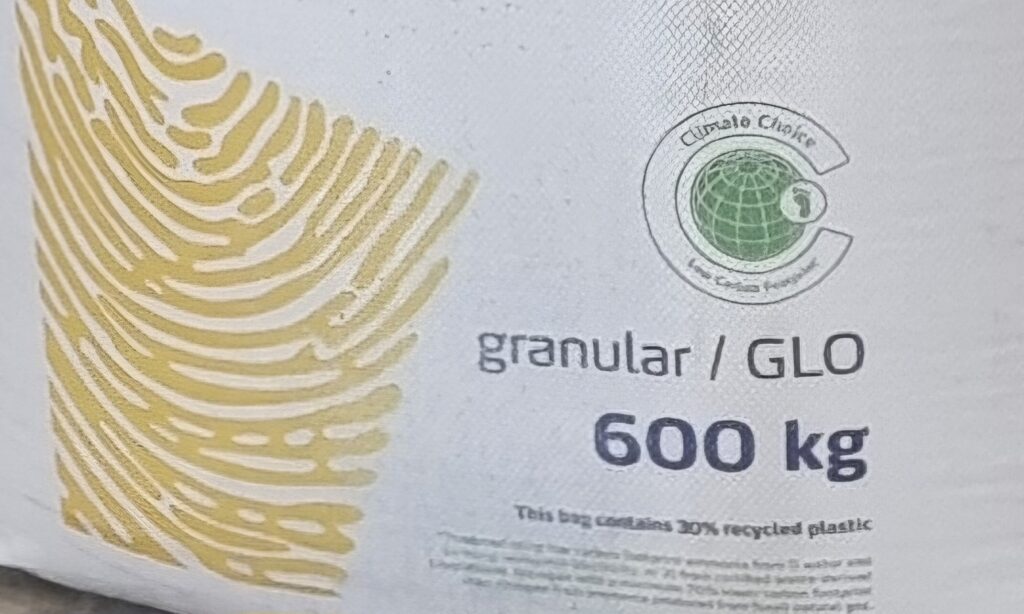
My spring barley is all strip tilled and the comparison between the crops established into overwintered stubble and cover crop, surprisingly, hasn’t thrown up any massive differences in the last 3 years. The barley following cover has always been marginally the best yield with the nitrogen and grain quality being the same as the rest. I had always feared that the soil after cover crops would retain too much moisture for the Scottish spring, and where the sheep have grazed the ground would be sticky or baked hard, this doesn’t seem to be a big problem as the grazing opens up the cover and the rooting makes the soil more workable. It does need managing however as the ‘green bridge’ over winter does make an ideal habitat for slugs. Putting slug pellets onto spring barley is a first for me.
Last Autumn was quite kind and we have the luxury, still, of being able to sow relatively early. Craft winter barley was sown around September 10th then Extase wheat September 17th with the Bamford and the Champion after that. Crops were established into good seedbeds and got of to a great start. Some wheat I have in a field with an ongoing drainage problem still suffered some flooding and this will have to be investigated further after harvest. Drainage continues to be a key factor in everything and requires constant attention. Some drainage work in the stubble ahead of spring beans would normally mean the plough would have been used but we flattened the trenches with the digger then I ran the drill over them once not sowing and when I passed over sowing, they seemed to go in well. This has allowed me to do another year of 100% no ploughing, year 3 now. I did start strip till in 2017 but only on some of my ground and only one field has never been ploughed since then. Noticeably, this field is the one in which the soil condition has improved the most.
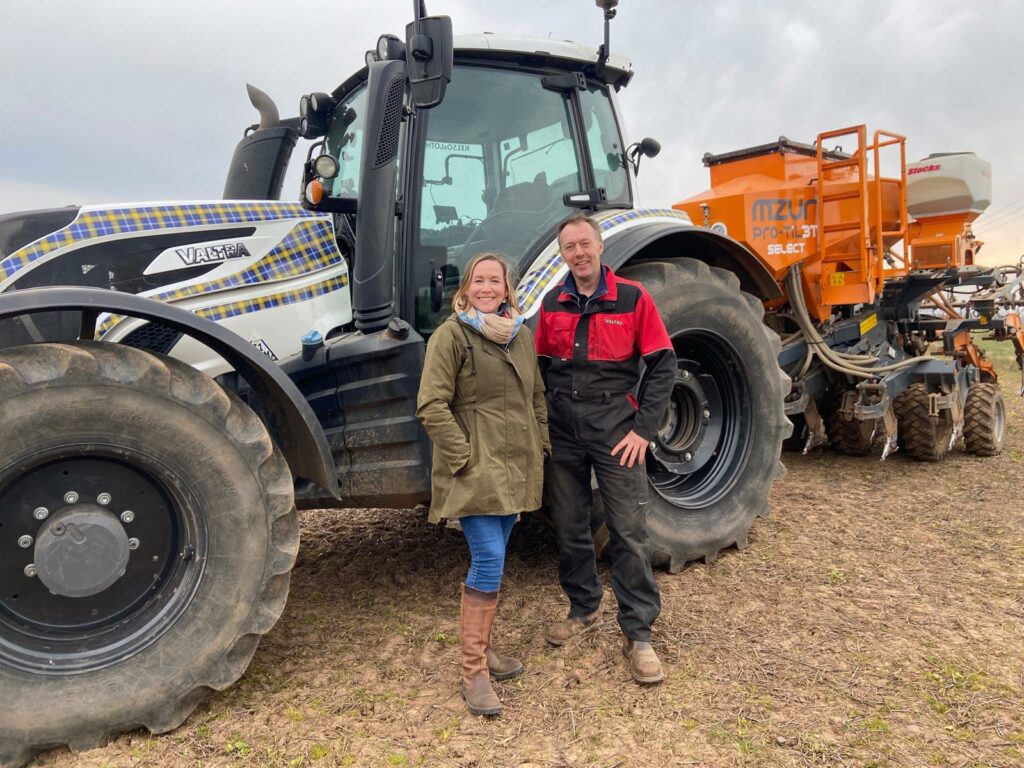
Last week I had a visit from the Landward team, the BBC Scotland land and farm-based TV program. They were interested in the growing of malting barley direct drilled into a cover crop. The cover had been grazed to reduce the bulk and pay for the seed, then sprayed off. They plan to follow my direct drilled Diablo malting barley crop from sowing to harvest. This was something which took the whole day to put together meaning it wasn’t my most productive day, but I do feel that if someone is interested in farming and what we do, we must engage and give them an honest picture of modern farming. I did try very hard to make the point, I have made large changes to my farming practices. These changes have already saved me money and time, have improved my soils, have lowered my carbon footprint, tick’s boxes for Government goals, and may prove vital for premiums and market access in the future, BUT at the same time, I have also increased my farm output. This is something that shouldn’t be overlooked. Scotland is not a big country and has a very limited arable acreage but a big demand for our produce. We must find the balance. I think using a system like mine, not taking good ground out of production, should be an option. I just hope the crop grows well, and they can find some good content from the lighthearted in cab chat with Arlene, not the chat about whether you can keep wine in the Valtra fridge!
